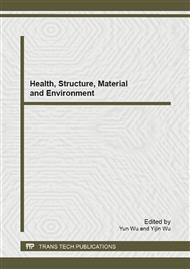p.882
p.888
p.894
p.899
p.905
p.911
p.922
p.926
p.930
Construction of Emission Reduction Potential Model on Refinery and Chemical Enterprises
Abstract:
Refinery and chemical enterprises in China are mostly of high energy consumption and high pollution enterprises, so that greenhouse gases, SO2, NOX, NH3-N, and COD have great emission reduction potential. At the present stage, refinery enterprises emission reduction potential just for a pollutant is not comprehensive enough. Based on the above-mentioned five pollutants of refinery and chemical enterprises, the pollution reduction potential model are established by using linear programming method, which can provide decision support of emission reduction for refinery and chemical enterprises during the "12th Five Year Plan". The comprehensive index evaluation method not only can be used to clean production evaluation about evaluation of the environmental impact of large-scale integrated refinery project, also can be used to clean production audit of existing projects and enterprises to implement cleaner production performance evaluation.
Info:
Periodical:
Pages:
905-910
Citation:
Online since:
February 2013
Authors:
Price:
Сopyright:
© 2013 Trans Tech Publications Ltd. All Rights Reserved
Share:
Citation:


